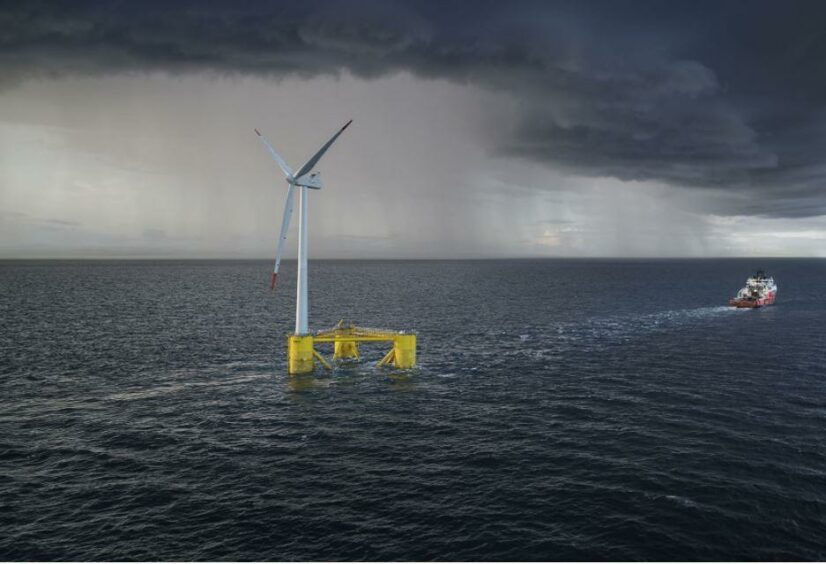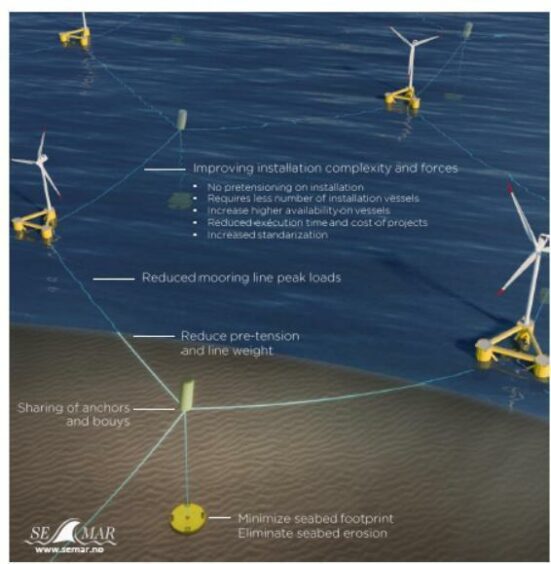
TotalEnergies has announced a partnership with Norway’s Semar to use and develop the company’s Honeymooring technology in future floating wind projects.
TotalEnergies said Monday that it had selected the Honeymooring solution, with the aim of reducing the costs and seabed footprint of floating wind projects.
It said use of the solution is expected to reduce the development costs of the supermajor’s future offshore wind projects in Norway and worldwide.
Semar describes the technology as “highly scalable and flexible” applicable for most locations. It works by connecting floating wind turbines in a “honeycomb” structure using shared anchors, specialised equipment and fibre ropes.
This enables developers to optimise the overall wind farm layout for prevailing wind directions or area restrictions. It can be used in a variety of water depths, and with a range of turbine configurations.
The company says it can reduce mooring hardware costs by more than 50% compared to traditional mooring systems with chains and clump weights.
It also simplifies the process of installation by reducing pre-tensioning by more than 80%, enabling floating turbines to be installed using smaller vessels.
Ultimately, this helps lower the overall levelised cost of energy (LCOE) and carbon footprint of floating wind developments.
“Thanks to our longstanding experience in the offshore oil and gas industry, we know mooring systems very well, and as we today have a large portfolio of offshore wind projects, we are proud to partner with Semar in the development of the innovative Honeymooring solution, which will contribute to lower the cost and the environmental impact of offshore wind energy,” said TotalEnergies VP of offshore wind, Olivier Terneaud.
Semar CEO Thor Valsø-Jørgensen added: “We are proud to have TotalEnergies as one of the important partners and contributors in the development of the Honeymooring solution. The overall project is being lifted by their support and the high-quality expertise which contribute to keep all of us in the forefront of the transformation towards green energy for the future.”
Though it did not specify which projects might use the technology, TotalEnergies already has portfolio of some 6 gigawatts (GW) of offshore wind projects in development, of which one-third are floating schemes.
In the UK this pipeline includes the Seagreen project, Outer Dowsing and Erebus, the latter being a 100-MW floating demonstrator off the Welsh coast.
Further afield it has projects in South Korea (Bada project), Taiwan (Yunlin project), and France (Eolmed project), and confirmed it will participate in future competitive tenders in the US, UK, France and Norway.
On the latter, TotalEnergies has joined partnered with Norsk Havvind and Iberdrola and intends to bid for leases as part of the country’s the 4.5 GW Utsira Nord and Southern North Sea II tenders.
Recommended for you

 © Supplied by Semar
© Supplied by Semar